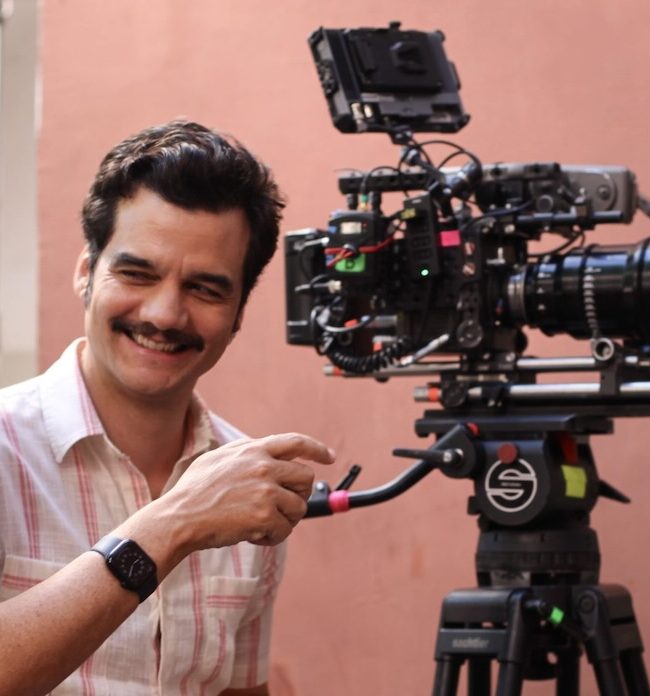HTN’s 9 Most Anticipated Films of DOC NYC ‘25

It’s that time again as New York City’s venerable celebration of documentary cinema, DOC NYC, kicks off today (November 12) running all the way through the end of the month with a November 30 wrap date. As has become the norm, the Hammer to Nail Team is all over this fest with coverage running throughout. What should you keep an eye out for? We’re glad you asked! Here are some top picks from HtN contributors Jack Schenker and Kaitlyn Hardy as well as our Lead Critic, Chris Reed.
Si La Isla Quiere (Island Willing)
Cece King’s Si La Isla Quiere (Island Willing) takes us to Chile’s Robinson Crusoe Island, where a small community has built their entire lives around coexisting with one of the planet’s most biodiverse ecosystems. With 61 times more endemic species per square kilometer than the Galápagos, this remote island doesn’t just serve as a backdrop, It’s a living force that dictates everything, which is why locals say “Island willing” instead of “God willing.” But their deep culture is under siege from the very conservation policies meant to protect the place, creating a painful irony that’s displaced families and disrupted traditional ways of life. Shot over several months by King, the film captures stunning footage from deep underwater to mountain peaks, but what makes it resonate is its refusal to lean into climate despair. Instead, it shows how genuine resilience comes from being rooted in a place, listening to it, and learning to move with its rhythms rather than against them, offering a surprisingly hopeful model for how humans might actually live alongside nature in the 21st century. (Jack Schenker)
No Mercy
Filmmaker Isa Willinger’s No Mercy is a daring visual essay asking the question, “do women make ‘harsher’ movies?” As a response to the sea of masculinity in filmmaking, and the wave of misogyny that crashes over female filmmakers who dare to wade in these waters, Willinger presents a cross-cultural, multi-generational discussion of female and nonbinary filmmakers attempting to answer that question. Willinger engages with filmmakers whose works confront the unrelenting experiences of living in a female or non-conforming body, and the targeted responses to their works and identities. In retaliation to claims that these filmmakers are overly transgressive, or shocking for the sake of attention, the powerful body of voices in No Mercy suggests their works simply reflect the harsh realities of being a woman. In fact, their films may not be harsh enough in comparison. (Kaitlyn Hardy)
Come See Me in the Good Light
Spoken-word poet Andrea Gibson died on July 14 of this year, at the age of 49, of ovarian cancer, leaving behind their partner—fellow poet Megan Falley—a number of pets, and a formidable body of work. In Ryan White’s latest documentary, Come See Me in the Good Light, we follow Gibson’s pre- and post-diagnosis journey, learning details of their life and anticipating their eventual demise. It’s sad but also profoundly uplifting, celebrating the beauty of our time on this world and the power of love. (Chris Reed)
Unanimal
Directors Tuva Björk and Sally Jacobson have Unanimal, at DOC NYC this year. Narrated by Isabella Rossellini, this hour-long meditation on human-animal relationships moves through zoos, farms, museums, and urban spaces to expose the absurdity of how we’ve categorized, commodified, and controlled the creatures we share the planet with. From horses trapped on treadmills for gambling to polar bears adapting to concrete enclosures, the film captures the bizarre theater of animals forced to navigate our modern, human-dominated world. But rather than preaching or piling on guilt, Björk and Jacobson deliver something more playful and philosophical, a loose, vignette-based journey. It’s a gentle, ironic, sometimes uncomfortably revealing film and one you should have on your watchlist! (JS)
Artists in Residence
In a similar vein to Isa Willinger’s No Mercy, Artists in Residence looks at the intertwined and unconventional lives of three female artists: Lois Dodd, Eleanor Magid, and Louise Kruger. Director Katie Jacobs paints a visceral image of the 1960s and 1970s New York City art scene, capturing the grime and beauty, hardship and unlikely hope that defined the city and the era – a fertile ground for art, experimentation, and creative innovation. In the process, Jacobs subtly suggests that, for a woman, being an artist is an inherently political act, as it diverts from the expected structure of a nuclear family with the woman in a housewife role. Instead, the female protagonists of Artists in Residence are single mothers, women who work with their hands, and own property. While not shying away from the dysfunction sometimes left in their wake, Jacobs’ film remains a testament to the rebellious spirit of the art world finding a home most naturally in women. (KH)
Life After
Director Reid Davenport (I Didn’t See You There) has cerebral palsy, which makes him an ideal documentarian to examine societal attitudes towards people with disabilities. That’s not all he takes on, however, in Life After, his latest film. Though he begins with a 40-year-old case of a woman who sought (and was denied) the right to end her life, he travels a unique path through many associated themes on his way towards a powerful conclusion. His film makes for essential viewing in this era of increasing cruelty towards those who exist outside of an arbitrary (and elusive) “normal.” (CR)
The Gas Station Attendant
Karla Murthy’s The Gas Station Attendant is a very personal story. Late-night phone calls recorded while her father worked the graveyard shift at a Texas gas station, home videos from road trips and holidays, fragments of a life pieced together. Her father, Shantha Murthy, ran away from home as a kid to escape crushing poverty in India, spent years sleeping in boxes and hiding on trains, and somehow kept believing his life would change. It did when he met an American couple who helped him get to the States, but the American Dream he’d imagined never quite materialized the way he hoped. What makes this film hit hard is how Murthy doesn’t just tell her dad’s story, she weaves in her own struggle as a first-generation American trying to figure out where she fits, creating a dual portrait of two people searching for their place in a country that promises everything. It’s an honest love letter from a daughter to her father, and a tribute to all the invisible people working nights to keep the world running. (JS)
Aurora
In his intimate daydream of a film Aurora, filmmaker João Vieira Torres takes viewers along the long, winding road of his family history as he seeks answers to lost memories. While living in a library in Paris, Torres’ grandmother appears to him in a dream, prompting him to revisit the places and people of his childhood, uncovering stories that hid beneath the surface: a curse, a murder, and a lost My Little Pony toy. Aurora is an odyssey of awareness, discovery, and reflection. The film is a simultaneously meditative and probing experience that invites audiences to think about what lies beneath the surface of their own subconscious, and delight in what could be discovered. (KH)
Rolling Film, Rocking History, Al Maysles Captures the Beatles
Albert (Al) Maysles and his brother David together made some of the most important observational documentaries of the 1960s and 1970s, among them Salesman (1968), Gimme Shelter (1970), and Grey Gardens (1975). Before all that success, the two found themselves in the middle of the Beatles’ first visit to the United States. The footage they captured would become their 1964 movie What’s Happening! The Beatles in the U.S.A. In his 10-minute short Rolling Film, Rocking History, Al Maysles Captures the Beatles, director Bart Weiss interviews the late Al (who died in March of this year, while David died in 1987) about that experience. The result is a poignant exploration of the joys of making movies in the middle of living history. (CR)
– Kaitlyn Hardy, Jack Schenker (@YUNGOCUPOTIS) & Christopher Llewellyn Reed (@ChrisReedFilm)











